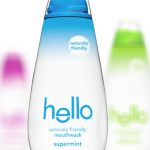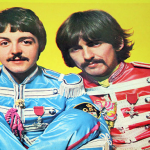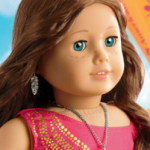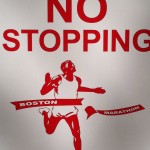In my new book, What Great Brands Know, I use case studies of specific brands to illustrate different aspects of right-brain marketing principles.
Two of these case studies are method, a line of minimalist-design, eco-friendly cleaning products, and Warby Parker, famous for high-quality, low-priced hipster eyeglasses. In these examples, I single out one aspect of each brand to make a point, but both brands actually use several other right-brain elements (including a few of the same ones) to distinguish themselves and earn customer loyalty.
Another similarity? Both have copycats.
method’s little clone: Hello
Hello describes itself as “seriously friendly oral care.” Like method, Hello products shun bad-guy ingredients, so its toothpaste and mouthwash, which come in funky flavors like mojito mint, contain no alcohol, or artificial colors or sweeteners. Toothbrushes are made from 50% recycled material.
Those who know method will find Hello looks hauntingly familiar.
- Teardrop-shaped packaging? Check.
- Palette of bright pastels? Check.
- Cheery greetings in a modern sans serif font on a white website? Check.
Coincidence? Not exactly. The unifying thread is Craig Dubitsky, Hello’s founder and CEO, who was an early investor and board member at method.
Warby Parker’s cousin Harry
Harry’s sells men’s razors positioned between the two mass-market extremes of “overpriced, overmarketed” and low-price, low quality. It offers kits (handle, razors, shaving cream) and individual items via direct mail.
Those familiar with Warby Parker will find uncanny echoes in Harry’s, from the look/feel of the website (tasteful pale neutrals), to tone (low-key with subtle humor) and products (stylish retro). Like WP, Harry’s has a cause tie-in–even a bar chart to compare pricing vs. competition.
Again, no coincidence. Jeff Raider, one of Warby Parker’s founders, co-founded Harry’s with college pal Andy Katz-Mayfield.
Real deal or faux?
Both method and Warby Parker were original concepts executed well. How do their clones fare? A close look yields some interesting distinctions.
Hello = hollow
Overall, Hello is a total left-brain play. You can almost hear them asking: “Okay, how can we ‘do another method’?” Successful elements of the original have been diligently analyzed, then copied and pasted onto a new category, but the result smacks of mimicry and opportunism.
The central premise of method was innovative: nontoxic cleaning products in bottles you don’t have to hide under the sink. Founders Adam Lowry and Eric Ryan had the peppy zeal of men on a mission. By contrast, Hello’s “mission” feels strained: Dubitsky founded Hello “because he was tired of hearing about a war in his mouth.”
Huh? What war? Gentler alternatives to Listerine have been around for decades, even on Listerine itself. Ditto gentle toothpastes. Ditto products with all-natural ingredients (Tom’s of Maine was founded in 1970).
At its core, Hello offers no new customer value. And, like most left-brain creations, it’s a bit clunky. “Let’s be friends,” says its website.
Well, I’m as fond of pearly whites and minty breath as the next person, but oral care as my BFF? Puhlease.
Hello is a new version of that classic consumer product staple, the me-too product line.
Harry’s: More than half-brained
Harry’s hefty left-brain origins are also apparent. For starters, the category is a strategic choice: ripe for disruption, like eyewear, with inordinate concentration and bloated margins. The brand vibe has also been painstakingly replicated. Like Warby Parker, Harry’s marketing veers toward achingly cool. Do people outside of Brooklyn, the Bay area and maybe Portland and Austin even qualify to own their products?
But underneath the surface, there’s much more whole-brain goodness at Harry’s than Hello. For one thing, there’s genuine customer value in the marriage of low price with Craftsmanship. Harry’s razors offer high-grade steel and top-flight German engineering. Like Warby Parker, Harry’s offers the same low-key Equanimity, treating customers as intelligent beings able to make informed choices. And smaller things like subtle literary Roots: Harry’s evokes the eponymous bar of Hemingway fame, while Warby Parker is named for two Jack Kerouac characters.
Close, but not quite
In fairness, Harry’s doesn’t measure up to Warby Parker on a couple of key measures.
Essence:
Warby Parker has a strong sense of mission, and its impact on individual lives can be big. Glasses are a necessity for most wearers, and appearance affects everything from self-confidence to getting hired. To offer a quality, stylish pair of prescription glasses for $95 is to provide a service of genuine value.
Harry’s mission is “a great shave at a fair price.” Not quite as stirring, is it? Men currently have plenty of shaving options, including upstart Dollar Shave Club, which has also succeeded in chipping away at the near monopoly of Big Razor (Gillette). And where eyeglasses are mostly a one-off sale, shaving is a lock ‘em in category so classic that the razor-and-blade example is surely known to every business student on the planet. A great business model, perhaps, but scarcely a mission.
Cause-related Roots:
While both companies tout their good works as central, WP’s approach is deeper and more authentic. For every pair of glasses sold, the company provides a pair of glasses to someone in need, partnering with non-profits that train low-income entrepreneurs to sell affordable glasses. This represents a thoughtful, strategic fit aligned with the company’s mission.
Harry’s do-good efforts are much shallower. They donate 1% of both sales and employee time to charitable partners chosen annually. A lot of noise for fairly small potatoes. Their current beneficiary, City Year, is certainly worthy, but may well be selected for its appeal to an urban clientele. A deeper, more strategic cause alignment would link the benefit of a shave with those deprived of access to this simple pleasure and/or necessity, such as homeless men or perhaps aging veterans.
The sincerest form of flattery
As whole-brain brands like method, Warby Parker, and others blaze successful trails, imitators will continue to follow. Those that aim to clone in a left-brain-only way may stumble into success, but they are likely to be the minority. The real successes will be those based on an equal marriage of traditional left-brain business savvy with genuine human-centered, nonlinear right-brain thinking. Dare I say…what great brands know?







